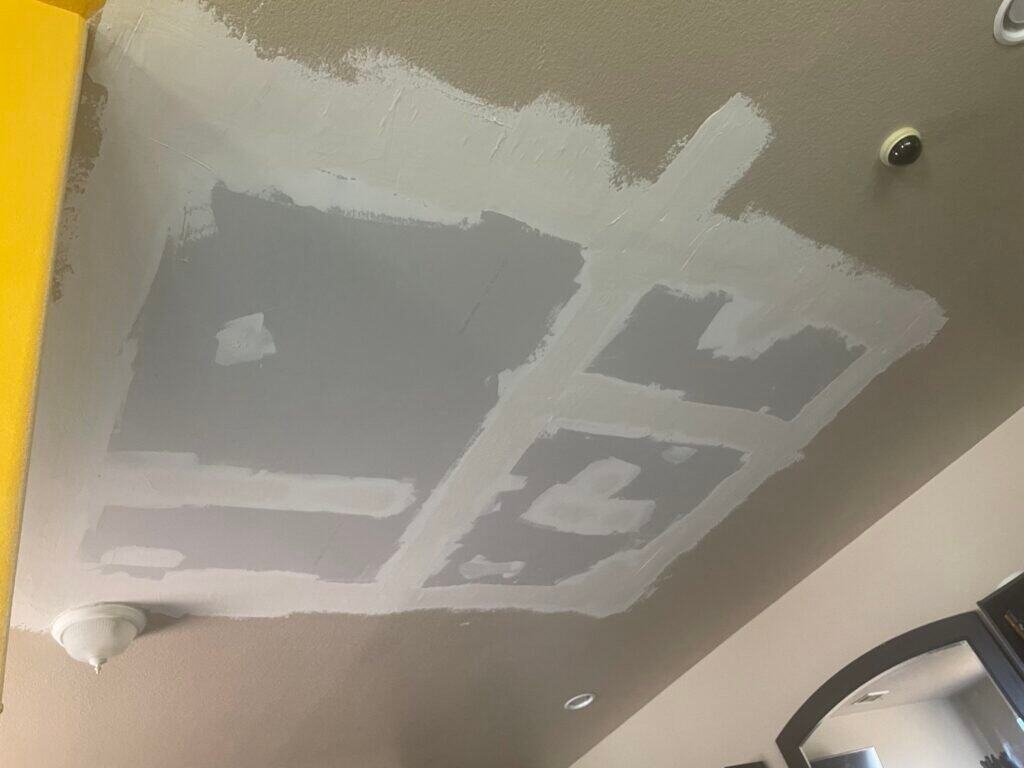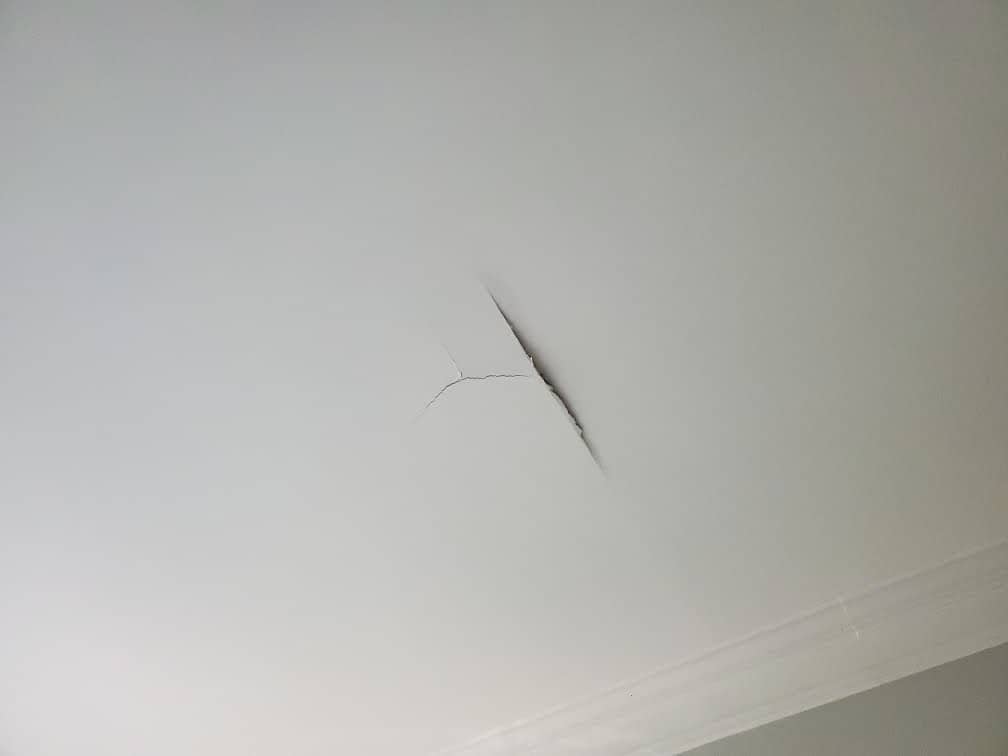Drywall Repair Ogden UT offers dependable services that complement Interior Painting.
Wiki Article
Discover the most effective Practices for Successful Drywall Repair Work and Installment
The art of drywall fixing and installment requires a blend of skill and accuracy. Understanding the crucial devices is vital for achieving a seamless surface. Understanding the detailed process can make a considerable difference in the result. Correct techniques for mudding and taping are also critical. What stays is the understanding of upkeep that ensures long life. These aspects together produce a sleek result worth checking out further.
Crucial Devices for Drywall Repair Work and Setup
When embarking on drywall repair and setup, having the right tools can substantially boost the efficiency and top quality of the job. An energy knife is vital for reducing drywall sheets precisely, while a drywall saw can assist in making more detailed cuts. Taping knives, offered in different dimensions, are vital for using joint compound efficiently and evenly. A drywall sander, preferably with a dust collection feature, aids attain a refined surface, minimizing the need for extensive cleaning.In addition, a determining tape assurances exact measurements, and a degree makes certain that installments are straight and plumb. Safety and security equipment, including dust masks and safety glasses, need to not be neglected to secure versus debris and dirt. Lastly, a stud finder aids in finding framing participants, guaranteeing safe and secure installment. By furnishing oneself with these important tools, the repair service and setup process becomes extra convenient and causes a professional-quality outcome.

Step-by-Step Overview to Patching Holes
Covering openings in drywall needs a methodical strategy to guarantee a seamless fixing. The area around the hole have to be cleaned up and any kind of loose debris eliminated. For small openings, a putty knife can be utilized to apply a light-weight spackle, pressing it right into the hole and smoothing the surface area. After it dries out, sanding is vital to produce a level coating. For larger openings, a spot of drywall might be needed. This includes reducing an item of drywall a little larger than the opening, safeguarding it to the wall surface with screws, and using joint substance to cover the joints. Once the compound dries out, it ought to be sanded smooth. Priming the patched area prior to paint will certainly assure an even surface. Following these steps will certainly result in a professional-looking repair that blends seamlessly with the surrounding wall.Methods for Smooth Drywall Installment
Achieving seamless drywall installation demands cautious planning and execution. Initially, it is vital to gauge and reduce drywall sheets properly to reduce spaces. Making use of an energy knife, installers should rack up the board before breaking it along the cut line, ensuring clean sides. Appropriately straightening the sheets is crucial; beginning with the top and functioning down aids keep uniformity.Attaching drywall to the studs requires constant spacing, commonly every 16 inches, using screws instead of nails for far better hold. This approach lowers the risk of pops in time. Furthermore, startling the seams in between sheets enhances structural integrity and lowers the visibility of joints.
Using the right density of drywall for particular areas-- such as moisture-resistant kinds in washrooms-- additional contributes to a flawless finish. Adhering to these strategies will certainly cause a smooth and professional-looking installation, setting the stage for the succeeding finishing procedures.
Ending Up Touches: Insulation and Mudding
Finishing touches, such as mudding and taping, play an important function in accomplishing a refined drywall surface area. Taping entails using a thin strip of drywall tape over the joints and seams, making certain a seamless look. This procedure assists protect against fractures and develops a solid bond in between drywall sheets. It is crucial to choose the best kind of tape, with paper and fiberglass fit together being one of the most usual options.Mudding, or applying joint substance, complies with insulation. This substance loads in voids and ravel the surface area for an uniform finish. It is generally used in numerous layers, with each coat requiring to dry prior to fining sand. Appropriate technique includes feathering the edges to mix the compound into the surrounding drywall, minimizing visibility.
When finished Read Full Article properly, taping and mudding improve both the structural and aesthetic honesty of the drywall setup, leading to a professional-quality finish.
Tips for Keeping Your Drywall After Installation

Additionally, maintaining a consistent indoor humidity level can avoid warping or mold development. Utilizing a dehumidifier in wet locations, like cellars, is recommended. It's also advantageous to periodically repaint locations that reveal wear, as this secures the underlying material. Ultimately, when relocating furniture or mounting components, caution ought to be exercised to stay clear of damaging the drywall. By following these maintenance ideas, house owners can prolong the life of their drywall, securing it continues to be an appealing feature of their insides.
Often Asked Concerns
What Safety Equipment Is Needed for Drywall Repair and Installment?
For drywall repair work and setup, crucial security gear includes security goggles to safeguard eyes, dust masks to prevent inhalation of fragments, gloves for hand defense, and knee pads for convenience during prolonged kneeling. Interior Painting.How Do I Identify the Drywall Density Needed for My Project?
To establish the drywall thickness needed for a job, one must think about the wall's architectural needs, local building codes, and the planned usage of the room, typically selecting 1/2-inch or 5/8-inch drywall.Can I Fix Drywall Without Removing Furniture From the Room?
Yes, drywall can be repaired without eliminating furniture from the area. Mindful preparation and protective steps can reduce mess, permitting efficient repair services while maintaining surrounding things risk-free from dirt and damages throughout the procedure.What Types of Drywall Are Best for Different Environments?
Moisture-resistant drywall is optimal for kitchen areas and bathrooms, while soundproof drywall matches shared walls in apartments. Fire-rated drywall is best for garages, and basic drywall works well as a whole living areas, making sure durability and viability for numerous settings.How much time Does It Take for Drywall Mud to Dry Entirely?
Drywall mud normally takes 24 to two days to dry totally, depending on elements like moisture and temperature Drywall Repair Ogden UT (drywall contractors). Thicker applications might require longer drying times, while thinner layers can dry out quicker. Correct air flow help drying
The art of drywall fixing he has a good point and installment needs a mix of ability and accuracy. When embarking on drywall fixing and setup, having the right devices can greatly boost the effectiveness and high quality of the work. An energy knife is essential for reducing drywall sheets specifically, while a drywall saw can aid in making a lot more intricate cuts. Achieving seamless drywall installment needs careful preparation and execution. Moisture-resistant drywall is optimal for cooking areas and shower rooms, while soundproof drywall suits shared walls in apartments.
Report this wiki page